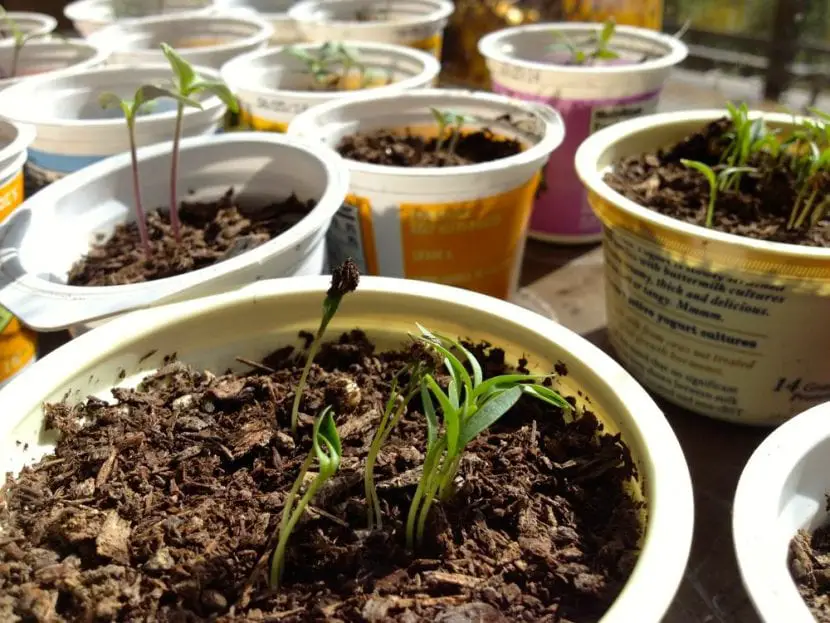
Image – thepatchyclawn.com
Watching a plant be born and grow is a magnificent experience from which we can all learn a lot. But for this to be the case, it is very important that we respect the biological cycles of the species we are interested in, since otherwise we will most likely end up wasting money and time in vain.
To prevent it from happening, I am going to tell you what is the best time to plant plants. This way, you will know when to prepare the seedbed.

Delonix direction (Flamboyán) 5 months.
First of all, it is important that you know that not all plant species are sown on the same dates. There are some that, due to their origin and evolution, need to be cold so that they can germinate; and there are others on the other hand that what they need is heat. So how do you know when to plant some and when others?
Well, for this we can turn to this same article:
Plants that are sown in warm season
Features
These plants are those that have one or more of the following characteristics:
- They bloom and fructify from fall to spring.
- Its life cycle is usually short; that is, they are annual or biannual, although there are exceptions.
- It usually has a warm tropical origin (such as those labeled “indoor plants”).
- They have a very fast growth rate.
Examples

They are practically all. These are some examples:
- Palms
- The vast majority of horticultural plants (tomatoes, peppers, watermelons, melonsEtc.).
- Trees of warm or temperate-warm climates (flamboyant, ficus, mango, mangosteen, almond, Etc.).
- Bulbous and rhizomatous that bloom in summer (rattan, dahlias, buttercups, Etc.).
- Aquatic plants
- Tropical ferns
- bromeliads
- Succulents (cactus, crass and plants with caudex)
Plants that are sown in cold season
Features
These are plants that have one or more of the following characteristics:
- It usually takes two or more months (sometimes even years) from when they bloom until their fruits finish ripening.
- Their life expectancy is usually long, several years; in some cases centuries.
- They are of temperate / cold origin.
- Its growth rate is usually rather slow.
Examples

Fagus sylvatica
Some examples are:
Did you find this topic interesting? If you have any doubts, leave them in the comments.

